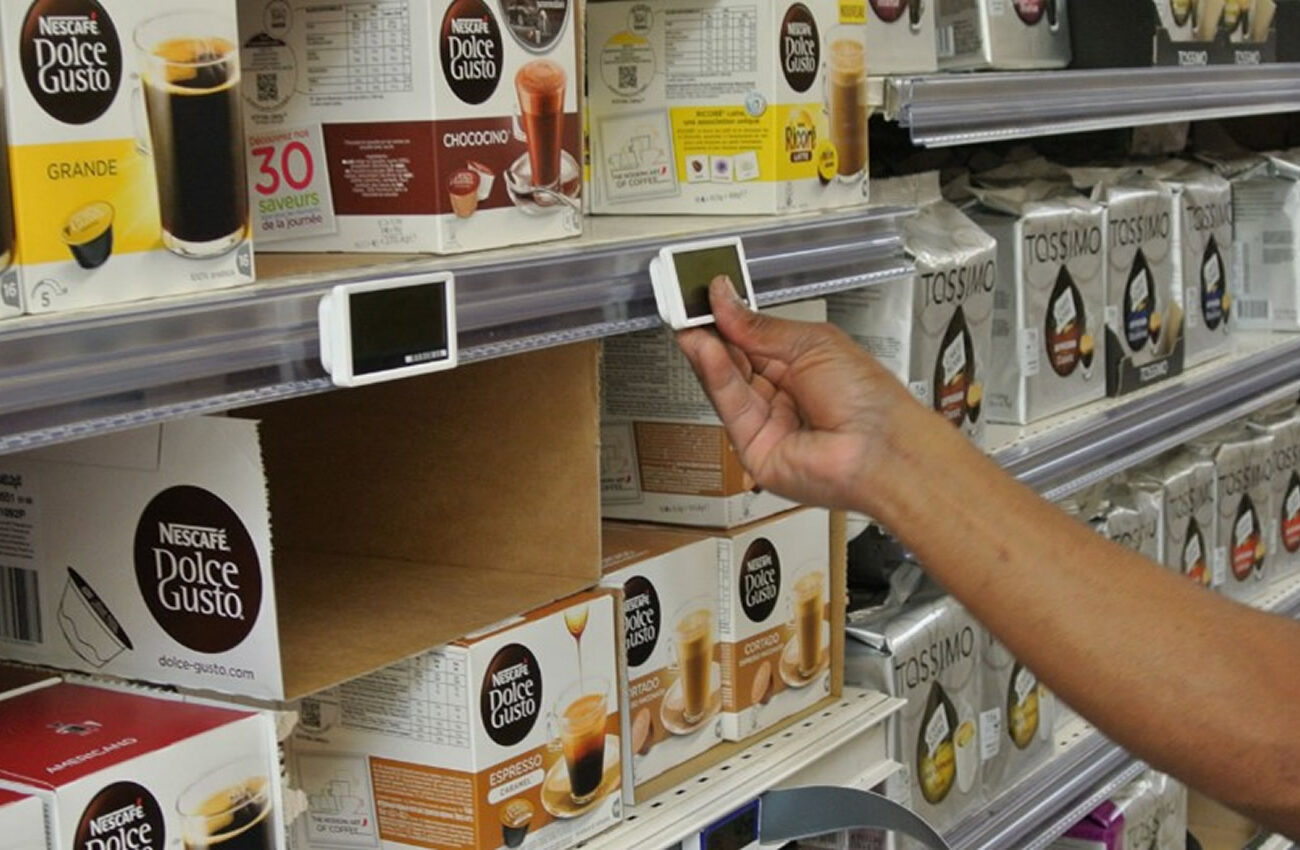Electronic Shelf Labelling – What is it all about?

An electronic shelf label (ESL) system is a tool used by retailers to display specific product pricing on shelves. Electronic display modules are fixed to the front edge of the retail shelving.
Electronic shelf labelling (ESL) uses E-paper or liquid-crystal displays (LCD) to show product prices to customers. When a product price changes, the system automatically updates the display through a wireless network.
This wireless communication must be reliable, fast, and energy efficient. It can use radio, infrared, or even visible light technology.
Automated ESL systems save time and reduce pricing management costs. They improve accuracy and allow dynamic pricing, which lets retailers adjust prices instantly. Dynamic pricing helps stores respond to changes in demand, online competition, stock levels, or expiry dates. It also supports short-term promotions and sales events.
The Importance of Stock Management
Maintaining correct stock levels is essential for business success.
Too much stock leads to overstocking and higher storage costs.
Too little stock causes product shortages and lost sales.
Technology helps manage stock efficiently. It can alert staff when items are running low and need to be replenished.
Even with advanced software, errors can still happen. Understanding the full capability of available technology helps reduce these inaccuracies and improve performance.
Why Retailers Are Adopting ESL Technology
Electronic shelf labels are becoming increasingly popular for managing product pricing and stock information.
ESLs do far more than display prices. They also support real-time stock management, reduce manual labour, and enhance the shopping experience for both customers and staff.
Below are six key ways retailers can use ESLs to manage stock in-store.
1. Informing Customers About Stock Availability
At first glance, an ESL looks like a digital price tag. However, it provides valuable information to customers.
ESLs can show current stock levels, so shoppers don’t need to find an assistant. If an item is out of stock, the display can show the next delivery date.
Some ESLs even include QR codes, letting customers order online or check availability at nearby stores.
2. Displaying Stock Details for Retail Staff
For retailers, ESLs display more than prices.
The labels can show stock levels in both the store and warehouse. They may include codes to alert staff about promotions or cross-selling opportunities.
ESLs can also show alternate product locations. This helps staff avoid lost sales when a product isn’t on the main shelf but is available elsewhere in the store.
3. Maintaining Accurate Stock Levels
With ESL technology, retailers can respond quickly to stock changes.
Slow-moving products can be discounted earlier, while high-demand items can be restocked faster.
ESLs can also highlight seasonal or perishable goods that need to sell before their expiry date. This reduces waste and helps improve profit margins.
4. Supporting Staff at the Shelf Edge
ESLs make it easier for shop assistants to help customers directly.
For example, in a shoe department, an ESL can display size availability. This allows staff to confirm if a specific size is in the backroom without leaving the customer.
If the size is unavailable, the ESL can direct customers to nearby stores or online options, improving service and satisfaction.
5. Highlighting Stock Status Through Colour Coding
ESLs can use colour coding to draw attention to important stock information.
For example, labels can change colour when items are running low, have moved location, or are discontinued.
This helps staff locate stock quickly and reduces time spent on manual checks. The result is lower labour costs and more time for customer service.
6. Preventing Out-of-Stock Situations
Most stock shortages occur at the store level, not during distribution.
Often, the issue is simple: staff do not restock quickly enough.
By connecting point of sale (POS) systems with ESL data, staff receive instant alerts when items are running low. This prevents stockouts before they happen and ensures shelves stay full.
The Future of ESL Technology
ESL systems help reduce the cost of poor stock management. They also offer new opportunities for automation, data analysis, and customer engagement.
Because ESL technology can process multiple data streams, it can show dynamic and real-time information right at the shelf edge.
The potential applications are expanding rapidly — from inventory control and pricing to promotions and analytics.
Smarter Stock Management with ESL
Accurate stock management powered by ESL technology saves both time and money.
It reduces human error, supports staff, and improves the customer experience.
By adopting electronic shelf labelling, retailers can improve stock visibility, pricing accuracy, and overall store performance.
Contact RGIS to learn how ESL technology can help your business achieve efficient, accurate, and modern stock management.